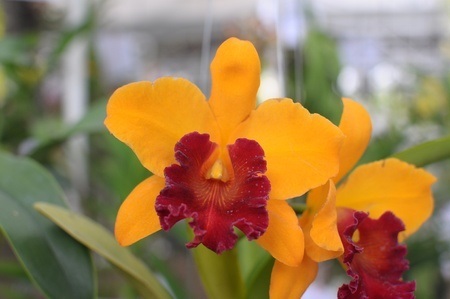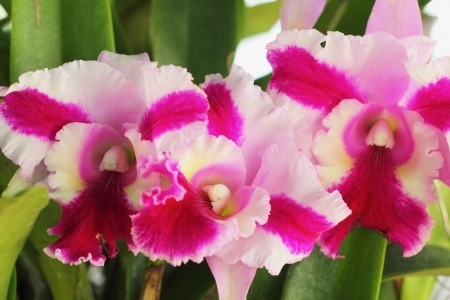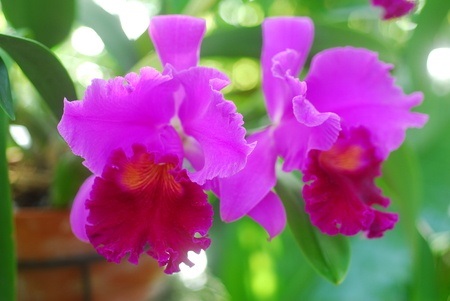






This attractive species is native to Central and South America. It likes warm temperatures and medium light. At home it will be best kept on a windowsill on either southern, eastern or western side.
Flowering: The corsage orchid has the largest flowers of up to 5 inches across. They also come in all colors and will make your home not only look more alive, but thanks to its strong fragrance it will make it smell wonderful.
Cattleya Orchid tends to bloom once a year and the flowers last 2-3 weeks. However, nowadays some of the hybrids last 5-6 weeks.
In order for them to bloom they need direct sun (filtered) and cool evenings. Temperature of 55 degrees usually starts off the flowering cycle.
Foliage: The leaves are long and are attached to large growths, called pseudobulbs, which are connected to each other by a horizontal growth, called rhizome. Pseudobulbs hold water and energy for the plant.
In the place where the pseudobulb meets the leaf a bloom sheath will come out and this is also the place, where the flowers will bloom. When the pseudobulb matures its outer layer will turn brown, or white. This is called 'sarong'. It is best to peel it off as it is often a good breeding ground for bugs.
The pseudobulbs will become brown and shrink after a few seasons. Cut it off by the rhizome during the next repotting.
Displaying and growing: The orchid looks beautiful in clay pots (they are the best for watering - please see below), in bright rooms and on windowsills. It is a good idea to have them in different colors and display them together.



Light: If the Cattleya doesn't get enough light it will fail to bloom, the old bulbs will die off and the new ones will get smaller and weaker. However, if given too much light the leaves will burn and the plant will look unattractive. The best solution to this is to understand the natural habitat of Cattleya Orchids and trying to give them a similar environment at home.
Overwatering: Overwatering can cause the roots to rot.
Pests: Scaly and mealy bugs are the most common. You can get rid of them by using Pest Oil.
Copyright © www.100flowers.win Botanic Garden All Rights Reserved